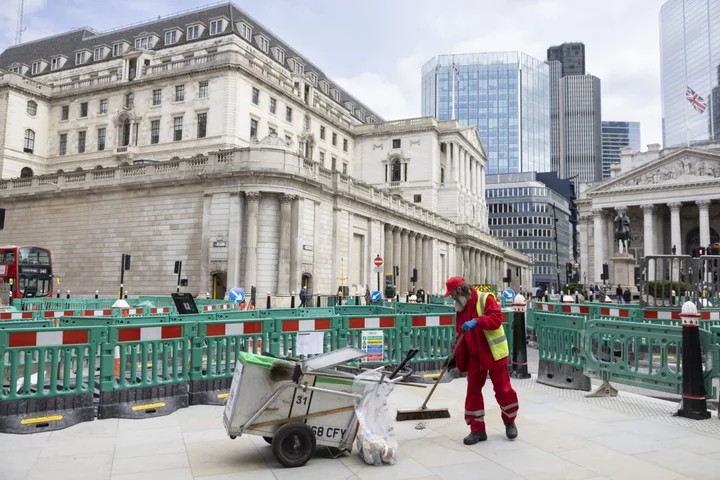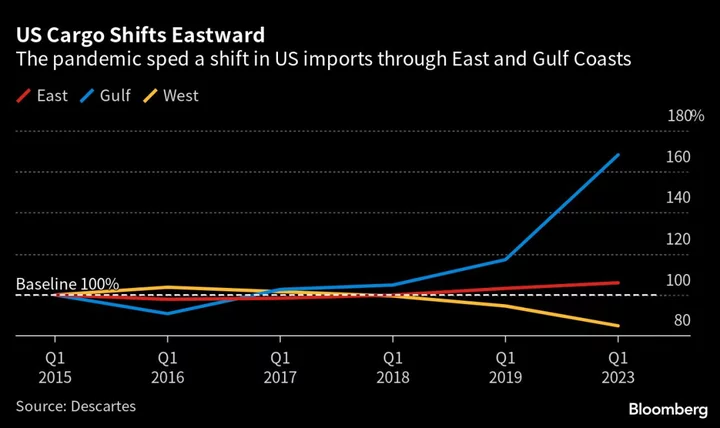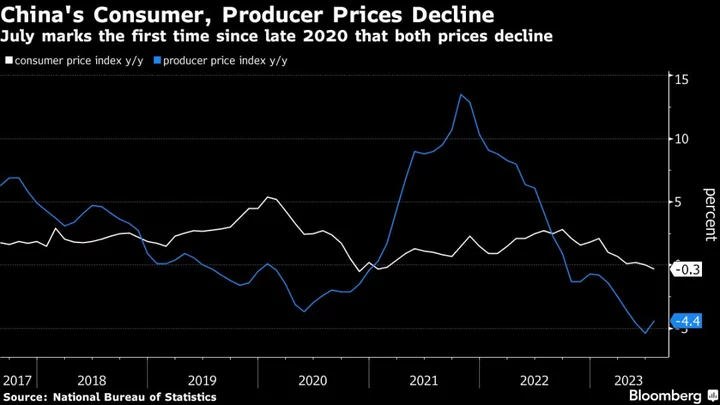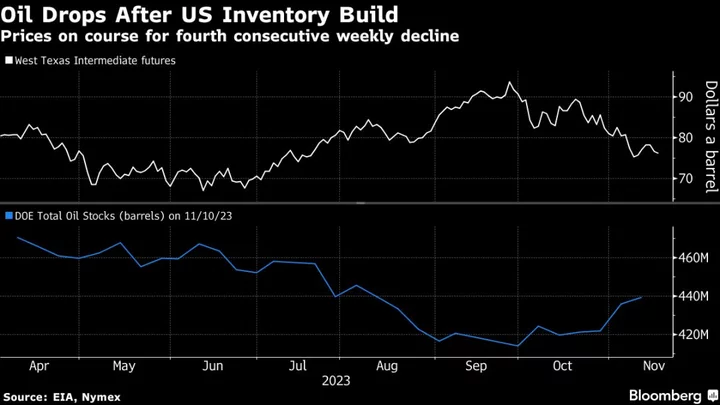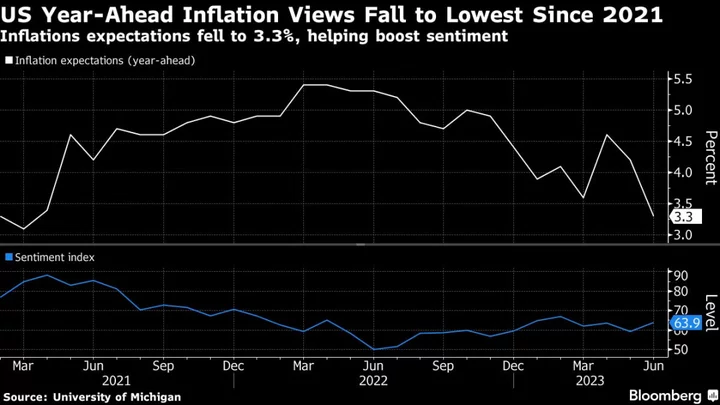The UK labor market showed fresh signs of cooling in a boost for bets that interest rates are close to peaking, although accelerating wage growth remained above the Bank of England’s comfort zone.
The number of payrolled employees fell 136,000 in April, the first drop since February 2021, the Office of National Statistics said Tuesday, adding that the figure was subject to revision. Meanwhile, worker inactivity decreased, with 156,000 people rejoining the job market.
Wage growth — the key indicator watched by the Bank of England — nonetheless continued its march higher. Average earnings excluding bonuses rose an annual 6.7% in the three months through March, up from 6.6% in the period through February.
The figures leave the BOE facing a difficult balancing act after raising interest rates for 12 straight meetings in a bid to avert a wage-price spiral.
On Monday, BOE Chief Economist Huw Pill said he “hoped” policmakers had done enough on rates but cautioned that they would need to monitor wage growth and labor market tightness for signs that the Bank’s actions were filtering through the economy.
Private-sector pay excluding bonuses is still rising by 7% year-on-year. Crucially, a key wage metric watched by the BOE — annualized private wage growth — accelerated to 5.9%, a level economists say is not consistent with bringing inflation back to the 2% target.
Money markets pared interest-rate hike wagers after the release. Traders now see just a 50% chance that the BOE will raise rates to 5% this year, a level that was all but certain at the start of the month.
The pound weakened as much as 0.5% to $1.2466 on speculation that the economy may be showing some signs of softening. The moves faded quickly, though, with attention turning to accelerating wage growth.
The jobless rate edged up to 3.9% from 3.8%. The employment rate rose 0.2 percentage points to 75.9%. There are now just 78,000 fewer people in work than before the pandemic and the number of hours worked is almost back at pre-Covid levels.
The increase in employment and unemployment was driven by another sharp fall in inactivity, those not looking for work, which was most marked among 16-64 year olds as students returned to the labor market. However, people inactive due to long-term sickness hit another record high. There are now 438,000 more long-term sick than before Covid.
Fewer Vacancies
In a further sign that pressures may be easing in the labor market, employers scaled back recruitment. The number of advertised vacancies fell for the tenth time in a row but still remained at 1.1 million, well higher than pre-pandemic levels. Job postings slipped in 14 of the 18 sectors tracked by the ONS as employers turn cautious amid a deteriorating economic backdrop.
The redundancy rate also dropped. Companies have said they would rather hang on to staff than let them go due to difficulties hiring.
“It’s encouraging that the unemployment rate remains historically low but difficulty in finding staff and rising prices are a worry for many families and businesses,” Chancellor the Exchequer Jeremy Hunt said.
“Labor market remains resilient, but signs of cooling are beginning to emerge,” said Yael Selfin, chief economist at KPMG UK. “Wage growth remains elevated, driven by firms competing for scarce workers and employers seeking to compensate workers for some of the strong inflation and rising mortgage costs they have experienced.”
Wages have been driven higher by acute labor shortages, which has given workers unprecedented bargaining power.
Earnings are nonetheless failing to keep pace with double-digit inflation, a gap that has led to months of strikes that have disrupted services and hit the economy as workers from nurses and teachers to civil servants and train drivers seek to maintain their living standards. Regular pay fell 2% in real terms on the year.
The ONS said 556,000 working days were lost due to strike action in March, a month that saw junior doctors walk out for the first time since 2016. That’s the highest number since December.
--With assistance from Constantine Courcoulas, Harumi Ichikura and Mark Evans.

